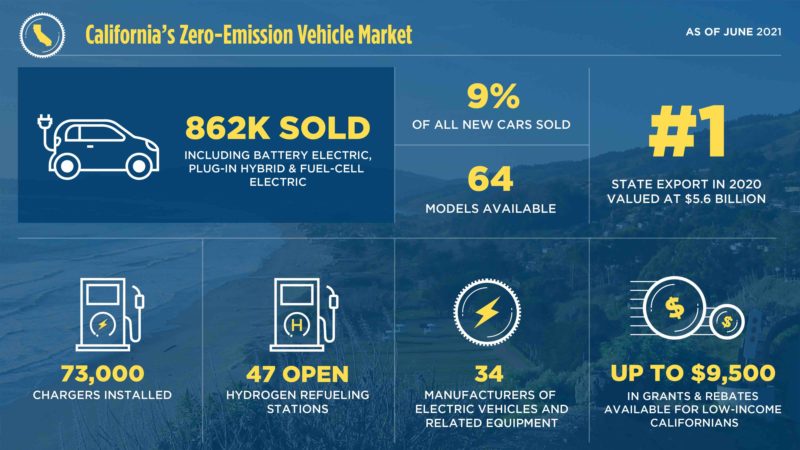A new analysis published by the California Energy Commission has found the state will need nearly 1.2 million public and shared electric vehicle (EV) chargers by 2030 if California is to meet the need of 7.5 million passenger plug-in EVs expected by the end of the decade.
California already has 73,000 public and shared EV chargers and a further 123,000 are planned to be installed by 2025. However, this nevertheless falls short by 54,000 of the state’s goal of having 250,000 EV chargers by 2025.
The findings were published in the California Energy Commission’s (CEC) inaugural Assembly Bill (AB) 2127 Electric Vehicle Charging Infrastructure Assessment which examines California’s charging needs in lieu of Governor Gavin Newsom’s executive order requiring that the sale of all new passenger vehicles be zero-emission by 2035.
In addition to the necessary 1.2 million EV chargers for passenger vehicles, the CEC also expects that 157,000 chargers will be needed by 2030 to support 180,000 medium- and heavy-duty electric trucks and buses that are also anticipated to be travelling on California’s roads.
“We need to bridge the gap in electric vehicle charging or we won’t meet our goals for zeroing out harmful pollution from transportation,” said CEC Commissioner Patty Monahan. “Building over a million chargers by 2030 is ambitious, but it’s also an opportunity to create good jobs and showcase California’s can-do spirit.
“California isn’t backing down from this challenge because the health of our communities and planet is at stake. I’m proud that Governor Newsom is prioritizing zero-emission transportation through his proposed budget investments so we can do more now to meet consumer and market needs through strategic public investments that leverage private
The assessment also notably found that, by 2030, electricity demand trends will shift as electric vehicles become more commonplace.
Specifically, the report expects that in 2030 electricity consumption from passenger EV charging on a typical weekday could reach approximately 5,500MW around midnight and 4,600MW around 10am – increasing electricity demand by up to 20-25% at those times compared to now.
Therefore, in an effort to manage the new load caused by EV charging while still maximising EVs as an energy resource, the California Energy Commission emphasised the importance of pursuing greater vehicle-grid integration technology – or at least increased coordination of charging with grid needs – so as “to ensure that charging is better aligned with clean, renewable electricity without sacrificing driver convenience.”
The report also emphasised the need for equitable charger deployment throughout California, directed by targeted public investments, as well as supporting local efforts to prepare for the mass electrification of transport through community engagement, land use planning, and permitting.
Finally, as highlighted in the image below, the report also outlined California’s progress towards such a mass electrification of transport.

Joshua S. Hill is a Melbourne-based journalist who has been writing about climate change, clean technology, and electric vehicles for over 15 years. He has been reporting on electric vehicles and clean technologies for Renew Economy and The Driven since 2012. His preferred mode of transport is his feet.



